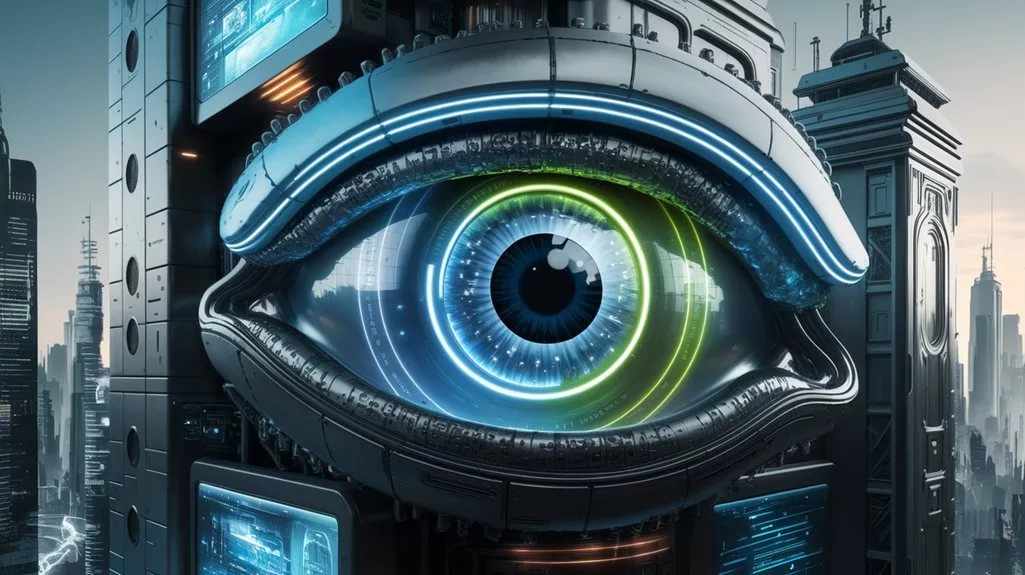Governments and Big Tech could, in theory, strike the balance between AI safety and innovation. But it's like juggling chainsaws—one wrong move, disaster. Existing frameworks like NIST AI RMF aim for a harmonious blend; some regs stifle, others inspire. Tech giants' lobbying, though, often muddies waters. Still, collaboration might cook up regulations that nurture innovation without releasing AI chaos. Intrigued? There's more to uncover in this electrifying saga.
Key Takeaways
- Collaborative efforts between governments and Big Tech can ensure AI safety while fostering innovation, as seen in the NIST AI RMF approach.
- Balancing regulation with innovation requires flexible policies that adapt to technological advancements without stifling creativity.
- Industry self-regulation, alongside government oversight, can create a dynamic environment for safe AI development.
- International guidelines, like those from OECD and UNESCO, offer frameworks to harmonize safety standards globally without hindering progress.
- Transparent and accountable AI systems are crucial for maintaining public trust and encouraging responsible innovation.

Can governments and big tech truly make AI safer? Well, they certainly have their work cut out for them. With AI's rapid evolution, the race to establish effective regulatory frameworks is on. The NIST AI Risk Management Framework (AI RMF), for instance, is a valiant effort to tackle AI risks head-on, focusing on trustworthiness and safety. Yay for frameworks! Developed through a collaborative approach with the public and private sectors, it's a proof of teamwork. But will it suffice? That's the million-dollar question.
AI safety: Governments and Big Tech face a challenging journey, racing to build effective regulatory frameworks.
The U.S. Department of State's "Risk Management Profile" aligns AI with international human rights. Because, obviously, machines need etiquette lessons too. Meanwhile, NIST's generative AI profile highlights unique risks and strategies, like taming a wild beast. And for global reach, AI RMF is translated into Japanese and Arabic. AI diplomacy at its finest. AI's role in cybersecurity protection is becoming increasingly critical, as it aids in detecting threats and automating incident response.
Enter California SB1047, a safety-centric bill targeting advanced AI models. Its aim? To keep AI models from wreaking havoc. Across the pond, the EU Artificial Intelligence Act proposes a harmonized legal framework, risk-based management being its mantra. National AI strategies bloom worldwide, as countries scramble to address AI's dual nature—its potential benefits and lurking threats. SB1047 focuses on critical harms, including scenarios that could lead to mass casualties or significant economic loss, highlighting the need for stringent safety measures. Legislative recommendations emphasize the need for transparency and accountability mechanisms to ensure that AI systems are safe and fair.
International bodies like OECD and UNESCO propose non-binding guidelines. Think of them as gentle suggestions. Meanwhile, regional and intergovernmental efforts intensify, working for thorough AI legislation. Because, apparently, more cooks in the kitchen might actually help this time.
Balancing safety and innovation is a tightrope walk. Crafting regulations that guarantee safety, without stifling creativity, is like juggling flaming torches. Existing U.S. regulations combine federal and state governance, with a sprinkle of industry self-regulation—because who doesn't love a little chaos?
Yet, despite executive orders and legislative discussions, gaps remain. Lobbying efforts by tech giants muddy the waters, hindering stricter regulations. Surprise, surprise.
AI's risks are not just theoretical. They include cyberattacks and infrastructure vulnerabilities. Human rights impacts, privacy, and non-discrimination are also at stake. Not to mention, the fear of AI models being hijacked for malicious purposes. Just a regular day in the AI world.
Big Tech, with its innovative capacities, stands at the forefront. But their role in making AI safer? Essential, yet complicated. Can they innovate while adhering to safety protocols? It's a delicate dance.
Ultimately, governments and big tech must tango together—regulatory frameworks in hand, collaborative approaches at heart. Because, at the end of the day, nobody wants an AI apocalypse. Or do they?
References
- https://www.nist.gov/itl/ai-risk-management-framework
- https://www.thenation.com/article/society/sb-1047-ai-big-tech-fight/
- https://www.dhs.gov/ai/ensuring-ai-is-used-responsibly
- https://www.welcometothejungle.com/en/articles/can-we-make-ai-safe-without-stifling-innovation
- https://www.morganlewis.com/pubs/2024/04/existing-and-proposed-federal-ai-regulation-in-the-united-states









